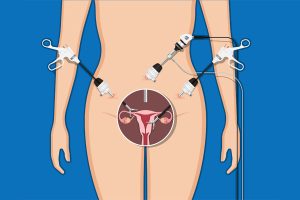Near the bladder, the prostate can be found.It is a walnut-sized gland involved in the production of seminal fluid.The aging process may lead to its enlargement, inflammation and even cancer. Therefore, there are several routine tests that doctors prescribe for all men older than 45.
If it is your first time, you may wonder how prostate test is done. Here we are going to give all the basics on the topic so you will not feel nervous about this procedure.
Prostate Exams: The Two Main Types
The basic examination consists of a manual and blood tests. Usually, both of them are prescribed to clarify the condition of the gland. According to the obtained results, the doctor will decide what to do next.
Digital Rectal Exam (DRE)
Description and purpose
As we have already mentioned, the prostate is located near the bladder and in front of the rectum. Therefore, it is possible to examine it manually directly through the rectum. This test is fast and only a bit unpleasant.
Procedure
How is a rectal exam done? To perform it, the doctor will ask you to bend at the waist while standing or lie on one side with bent knees. Then, he lubricates a gloved finger and accurately puts it in the rectum. You had better relax and breathe normally at that moment.
While one hand is examining the prostate, the other one will feel the pelvic area. It takes a few minutes and is accompanied by only slight discomfort. The urge to urinate may also appear, especially in case of an enlargement or inflammation of the gland.
Benefits and limitations
Immediately after this procedure, the doctor evaluates the size and shape of the prostate. Thus, it is risk-free and easy manipulation that provides necessary information.
The limitations to its performance are hemorrhoids, anal fissures and tears.
Prostate-Specific Antigen (PSA) Test
Description and purpose
Another test that is prescribed simultaneously with DRE is the PSA blood test. This abbreviation stands for the prostate-specific antigen. The gland produces this protein and releases a small amount in the blood under normal conditions. When there are some problems with it, PSA levels are increasing.
Procedure
After the doctor prescribes you this test, you will need to visit the lab. There a nurse will draw some blood from your arm vein. The blood sample will be analyzed to evaluate the PSA level. The results usually come in a few days.
Benefits and limitations
An increased PSA may be a sign of cancer. However, it is never used alone and other examinations are required for the diagnosis. When the PSA level is higher than3 ng/mL, the doctor prescribes further investigations.
There are no limitations to this test. It is basically painless and is not related to any problems or risks.
Preparing for a Prostate Exam
Pre-exam preparation
As these tests are easy, they do not require any special preparation. Do not forget to tell your doctor if you suffer from hemorrhoids, anal fissures or tears, because they may a bit complicate the DRE.
In addition, sometimes doctors ask to avoid sexual activity and ejaculation two days before the prostate exam. These activities may lead to a temporary increase in PSA levels and spoil the results of the blood test.
Diet
No special diet is required before these investigations. The food does not influence the parameters checked.
Medication
As for the medications, discuss those that you take regularly with the doctor. Usually, there are also no limitations and medicines that you have to avoid.
What to Expect During a Prostate Exam
Both these tests are easy and convenient and associated with only small discomfort. However, when you know what to expect it usually goes better.
Digital Rectal Exam
For this test, you have to visit the doctor. It is done manually and the specialist will at once give you an explanation of what he found out.
Positioning and technique
This examination can be done in two ways:
- you can stand and bend at the waist;
- you can lie on one side and bend the knees.
The doctor lubricates a gloved finger and put it in the rectum. At this moment, it is recommended to relax and breathe normally. Only this small moment is associated with mild discomfort and then there will be no pain.
What the healthcare provider is feeling for
The aim of the doctor is to evaluate the size and shape of the galnd. The experienced physician will know at once if something is wrong because inflammation leads to the enlargement of the gland that can be easily felt.
Duration and potential discomfort
This examination lasts less than minutes so you do not need to worry and be afraid of long suffering. Actually, you will be surprised how fast and easy it is. At the same time, it is very informative and widely used.
There are more psychological barriers to this test, than physiological ones. Keep in mind that you are here to keep your health at a proper level and diagnose possible problems, relax and do not create additional stress to the body by your mind.
Prostate-Specific Antigen Test
As for the blood test, it is also prescribed by the doctor and can be done in the lab. A nurse draws some blood usually from your arm vein. This blood sample is analyzed and the PSA level is evaluated. On average, one or two days are needed to get the result.
The obtained results are passed to the doctor who evaluated them together with his observations during the manual examination. This combination allows him to draw a correct conclusion. Then, you will need to visit the physician once again and he’ll describe the situation in detail together with the need for further investigations.
Understanding Your Prostate Exam Results
After the tests are done, you need to meet your doctor for one more consultation and explanation. He will show you the results and give the necessary advice.
Normal results
A normal gland has a size of a walnut, 4 cm wide, 3 cm high and 2 cm thick. The doctors’ experience allows for making a conclusion on its state during the examination.
As for the PSA in the blood, there is no specific normal level. However, if there are no problems, it is always very low.
Elevated PSA levels
The level of this protein that causes uncertainty is higher than 3 ng/mL. However, only this value is absolutely insufficient to draw any conclusions. Thus, further examinations will be prescribed.
Abnormal DRE findings
As for the DER, the doctor will tell you at once if something is wrong. He will be able to evaluate the size and shape of the gland and feel the improper size or signs of inflammation.
Next steps in case of abnormal results
If the results of these two tests are uncertain, further investigations are recommended, namely:
- A transrectal ultrasound provides the detailed prostate’s images. To obtain them, a doctor uses a small device that is placedin the rectum. This examination lasts approximately 10 minutes and is also only slightly uncomfortable.
- A biopsy is prescribed if there is a possibility of cancer. For this, a doctor utilizes a special needle to take several pieces of prostate tissue. The taken samples are closely examined for cancer signs.
These two procedures are a bit more complicated and require additional preparation. However, their results are used to prove the diagnosis and prescribe the required treatment.
Summary of How are Prostate Exams Done
Now you are aware of how is a prostate check done and what exactly it consist of. Usually, these examinations are included in the annual routine for men older than 45. That is because of the aging process and higher risks of prostate problems. Still, there is nothing to worry about and be afraid of. Such easy regular tests will help you to avoid major health problems so do not neglect them.
FAQ
As a part of a routine examination, it may be done once a year after 45 years old. If there are some disturbing symptoms, your doctor can prescribe it at any time.
This procedure is recommended for all men older than 45. Those who have this cancer type in their family history may do this test regularly starting from 40 years.
No, the DRE test may only be mildly unpleasant. However, it is very brief so one should not expect it as a painful procedure.
No, its results are not enough. In case the indicators are high, the doctor will further use a transrectal ultrasound and bioscopy for accurate diagnostics.
No, this test is done for early diagnostics. In this case, it will be easier to treat the disease but the exam will not stop its development.







